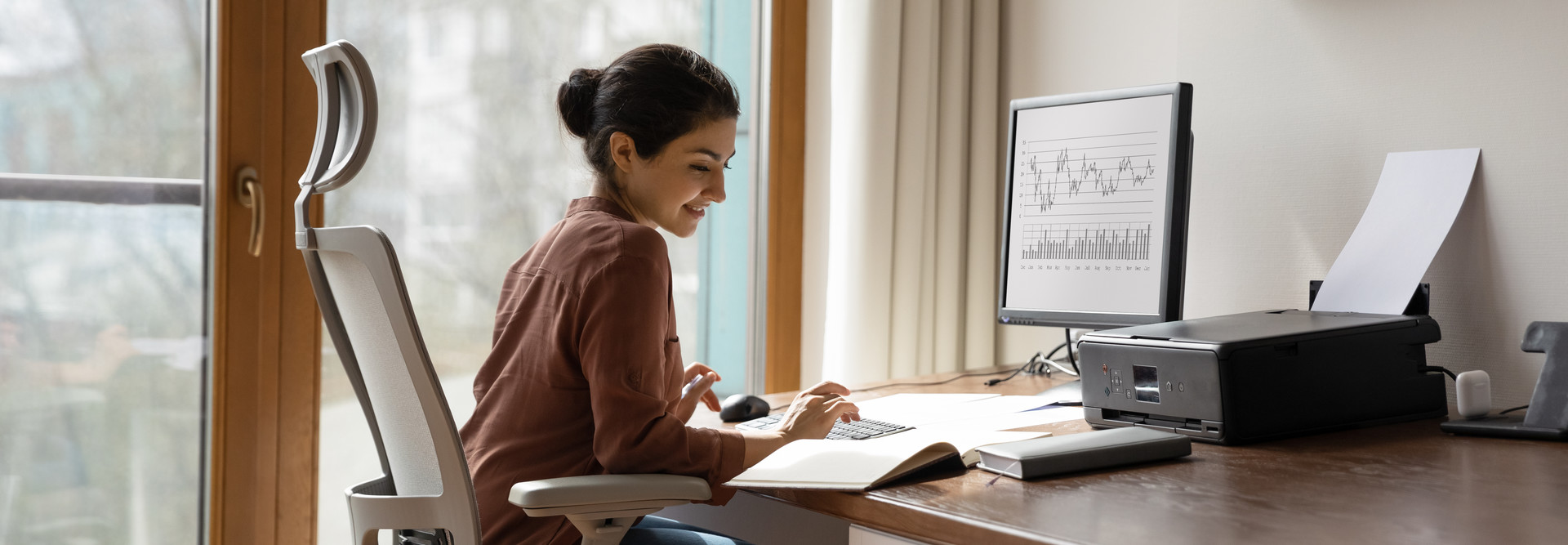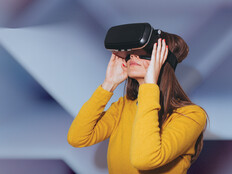When the COVID-19 pandemic began in 2020, big shifts occurred in how people work. But as people opt for desk hoteling at the office or working remotely at the coffee shop or at home, employers must make ergonomic adjustments to protect workers from repetitive stress injuries, carpal tunnel syndrome and musculoskeletal disorders, which account for close to 30 percent of all workers’ compensation costs, according to Bureau of Labor Statistics data.
The average computer user spends more than six hours a day on a computer, making it difficult to just open up a laptop and conduct a couple of hours of calls without feeling neck pain, says Edie Adams, director of ergonomics for Microsoft’s Human Factors Center of Excellence, Windows and Devices Design Team.
“It's important to think about, over the course of the day, how much of your time is spent in situations that really aren’t optimal for comfort, and try to get yourself more into that comfortable work position,” Adams says.
DISCOVER: Dive deeper into ergonomics for a hybrid work environment with Microsoft.
Ergonomic Features for Multiple Workspaces
As more workplaces reopen and employers shift to hybrid work environments, employees may now have more than one workstation. It’s important to pay attention to ergonomics wherever an employee is stationed for the day, and businesses can help them think through the right way to set up their workstations for optimal comfort and safety.
Here are some things to consider when helping employees set up their workstations.
Mice: The Microsoft Bluetooth Ergonomic Mouse features an easy-to-grip thumb rest and precise tracking sensor that glides smoothly over many surface types.
“Make sure that your mouse and your hand fit together,” Adams says. “You want to have support on the ribbed bottom of each of your phalanges so the mouse supports the weight of your hand right underneath the base of your index finger.”
The Microsoft Sculpt Comfort Mouse has a thumb scoop, which is a curved area for your thumb, while the Microsoft Sculpt Ergonomic Mouse supports a natural hand and wrist position and forearm posture to prevent repetitive stress injuries.
Keyboards: Ergonomic keyboards such as the Microsoft Sculpt Ergonomic Desktop have a gable slope, with the keyboard split in half and tilted toward the middle. Devices like the Microsoft Designer Compact keyboard can help to optimize a small workspace at home or at a downsized office site. “You can just tuck it in your backpack and have the accessories you need to work effectively,” Adams says.
30%
The percentage of all workers' compensation costs resulting from repetitive stress injuries, carpal tunnel syndrome and musculoskeletal disorders
Source: U.S. Bureau of Labor Statistics, "Employer-Reported Workplace Injuries and Illnesses," Nov. 3, 2021
The Importance of Avoiding Cognitive Strain
It’s not enough to only protect necks, elbows and wrists from physical strain — workers must also protect their brains from too much “cognitive strain,” Adams says.
People experience physical strain as they tilt their head toward webcams, and cognitive strain as their attention shifts between meeting participants, background noise and slide content that may be distracting and difficult to focus on, according to Adams.
“The cognitive load can be overwhelming, especially if you’re not used to having that kind of interaction in your workday,” Adams says.
To reduce cognitive strain, Adams suggests that workers blur their backgrounds during Microsoft Teams meetings to lessen distractions for meeting participants.
“It helps to maintain focus on the interaction of the conversation that’s happening,” Adams says. “The whole idea of visual meeting fatigue is real.”
MORE FROM BIZTECH: Find out how to build diversity and inclusion into hybrid work.
Ergonomic Considerations for the Evolving Workstation
As the workplace transitions from assigned cubicles with desktop displays to temporary spaces, workers will need to adjust to new ergonomic needs.
“We really have to be thinking about all the different forms work can take and make judgments across all of those different forms,” Adams says. “There’s so much change going on in what we consider office work, and ergonomics will be right there supporting all the way, making sure that people can be comfortable and productive wherever they are working.”
Brought to you by:











